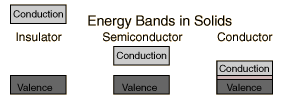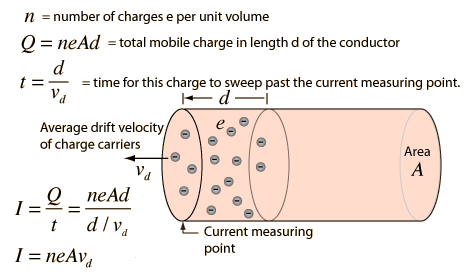The current in a circuit is a collective phenomenon from zillions of electrons. It appears due to conductivity, another collective phenomenon . It is a cumulative behavior of atoms and electrons in matter.
In insulators, electrons occupy energy levels and have to be actively kicked out of them, with the energy provided by an interaction. Insulators can be charged ( tribo electricity) but the potentials induced on the surface do not have sufficient energy to dislodge more electrons.
In conductors a single electron is free to move in collective energy levels of the conductor, and in metals there exist in a continuum unoccupied energy levels which an electron can move into given a very small energy. This is the band theory for solids.
A voltage drop sets up a field that individual electrons ( and ions) react to by moving according to the field. The individual motion of electrons in space is small, it is called the drift velocity.
The ensemble of motions of all outer level electrons generates the current. The drift velocity depends on the conductivity, and depends on the type of solid.
In resistors the conductivity is reduced , it takes more energy to go to the conduction band. For the same voltage drop across a resistor the drift velocity is much smaller ( depending on how resisitive it is) than for a same size conductor, which would short!
You say:
For an electron the only way I can see would have to do with its energy level.
In the band model, the band is wide, it will have less kinetic energy.
Also, by the work-KE theorem doesn't this also mean that the kinetic energy of the electron would have to change?
Yes
Yet this is clearly untrue for the current before and after (assuming a simple series circuit) is the same so the drift velocity cannot have changed.
It is changed from the case where that particular resistor is not added. The resistor acts as the maestro of the drift velocity. By lowering it within , conservation laws assure that it will get lower in the whole cirtuit, which is assured by the voltage drop across the resistor. The electrons in the metal see a smaller field than before the new resistor was introduced. ( I am talking of new resistor because one should always be there , otherwise one would have a short).


